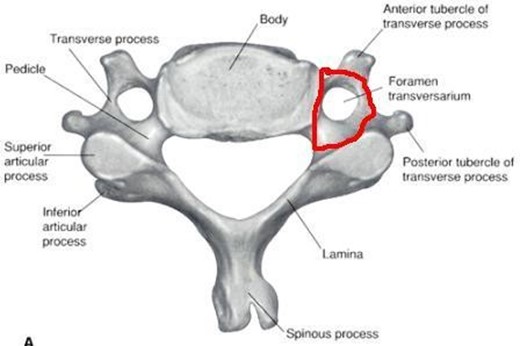Which term best describes the pulling of your toes upward toward your shin?
Eversion.
Plantarflexion.
Dorsiflexion.
Inversion.
The Correct Answer is C
Dorsiflexion is the movement of the foot upwards towards the shin.
It involves the contraction of the muscles in the anterior part of the leg, such as the tibialis anterior.
Dorsiflexion is used when walking or running.
Choice A is incorrect because eversion is the movement of the foot outwards, away from the midline of the body.
Choice B is incorrect because plantarflexion is the movement of the foot downwards, away from the shin.
Choice D is incorrect because inversion is the movement of the foot inwards, towards the midline of the body.
Nursing Test Bank
Naxlex Comprehensive Predictor Exams
Related Questions
Correct Answer is B
Explanation
The ethmoid bone is a part of the axial skeleton, not the appendicular skeleton.
The axial skeleton consists of the bones of the skull, vertebral column, ribs, and sternum.
Choice A is incorrect because the ulna is a part of the upper limb, which is supported by the pectoral girdle.
Choice C is incorrect because the ilium is a part of the hip bone, which forms the pelvic girdle.
Choice D is incorrect because the patella is a part of the lower limb, which is supported by the pelvic girdle.
Correct Answer is ["Foramen transversarium"]
Explanation

The foramen transversarium is a canal that is found in the transverse process of the cervical vertebrae, C1 through C7.
It is an opening in the bone that allows the passage of the vertebral artery, vertebral vein, and sympathetic nerves.
The vertebral artery passes through the foramen transversarium in C1-C6 vertebrae, while the vertebral vein passes through the foramen in C1-C7 vertebrae.
The sympathetic nerves pass through the foramen in C1-C6 vertebrae as well.
Injuries to the foramen transversarium can cause damage to the vertebral artery and vein, leading to a variety of symptoms, including dizziness, headaches, and visual disturbances.
Whether you are a student looking to ace your exams or a practicing nurse seeking to enhance your expertise , our nursing education contents will empower you with the confidence and competence to make a difference in the lives of patients and become a respected leader in the healthcare field.
Visit Naxlex, invest in your future and unlock endless possibilities with our unparalleled nursing education contents today
Report Wrong Answer on the Current Question
Do you disagree with the answer? If yes, what is your expected answer? Explain.
Kindly be descriptive with the issue you are facing.
